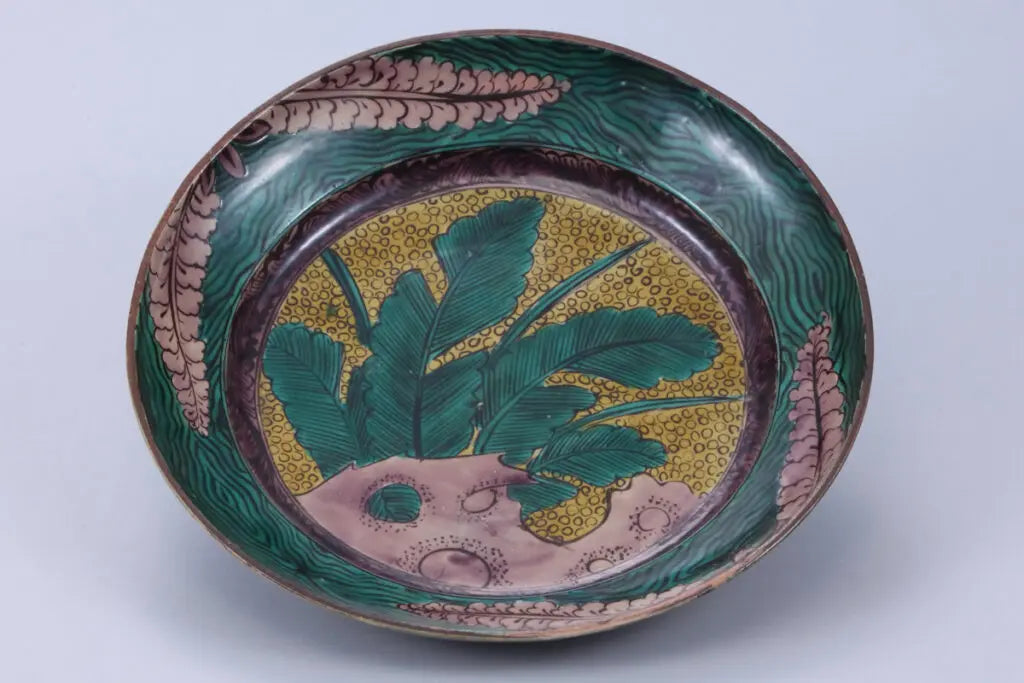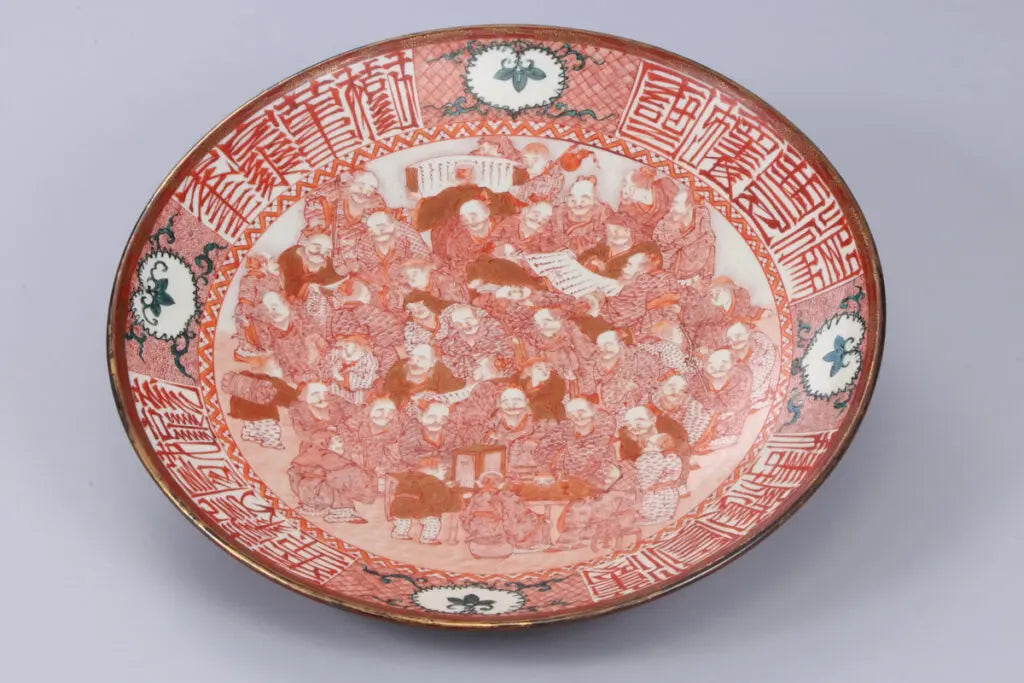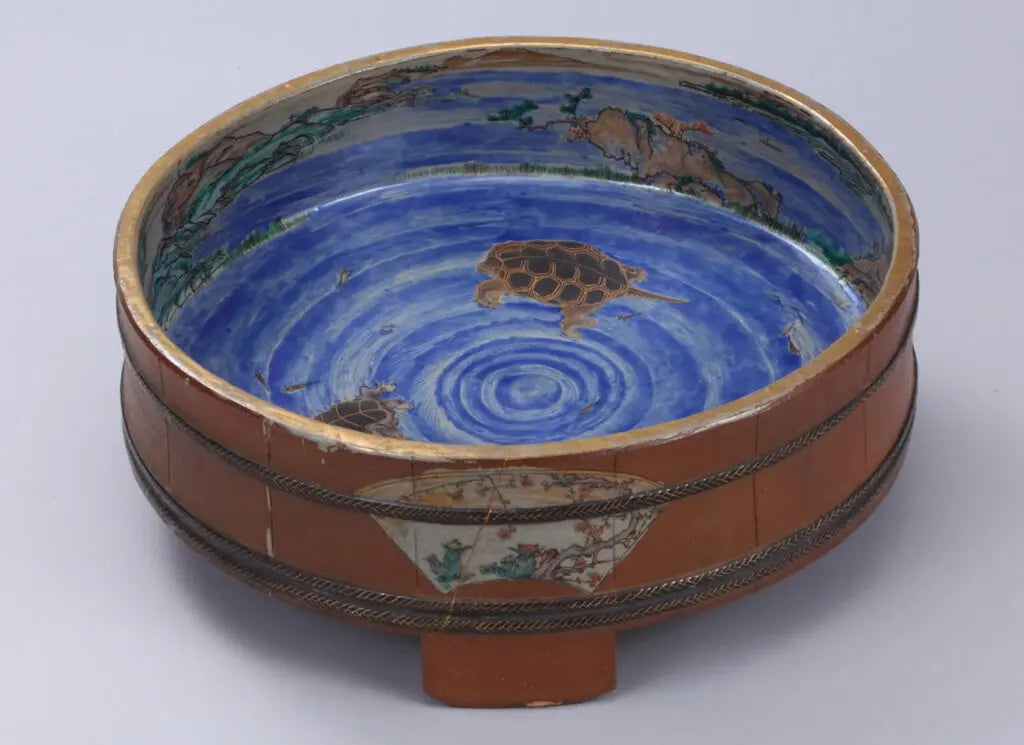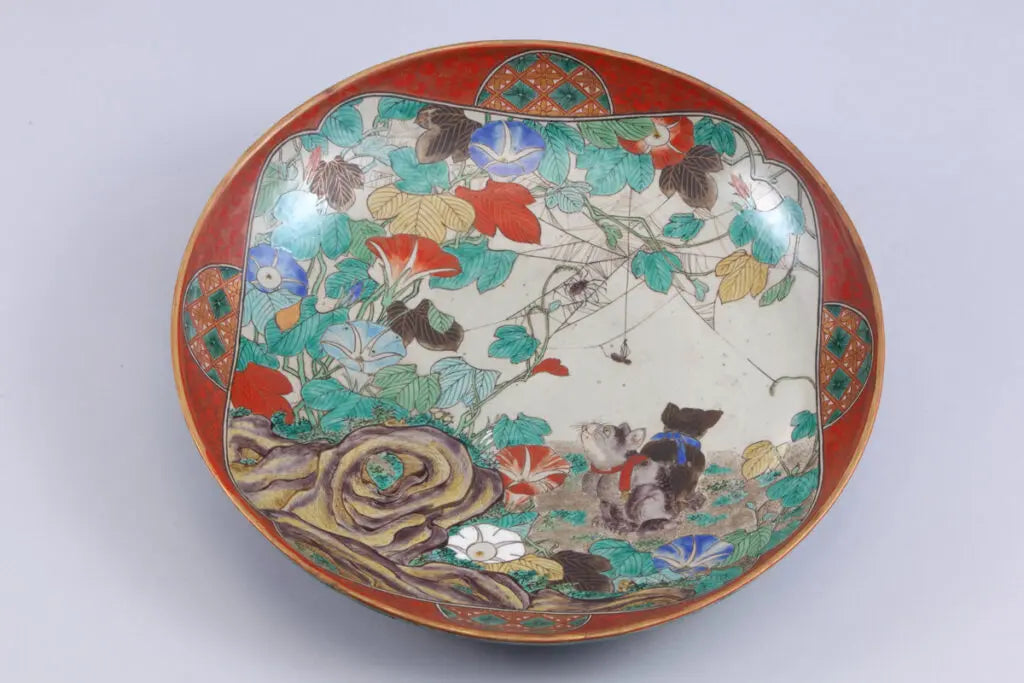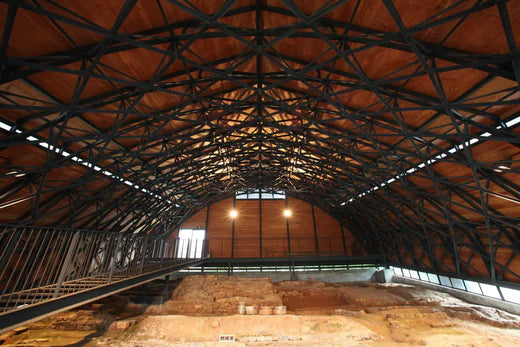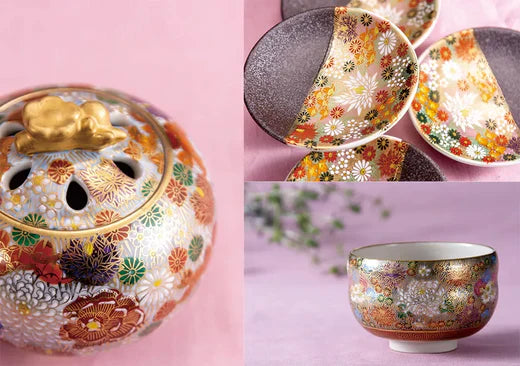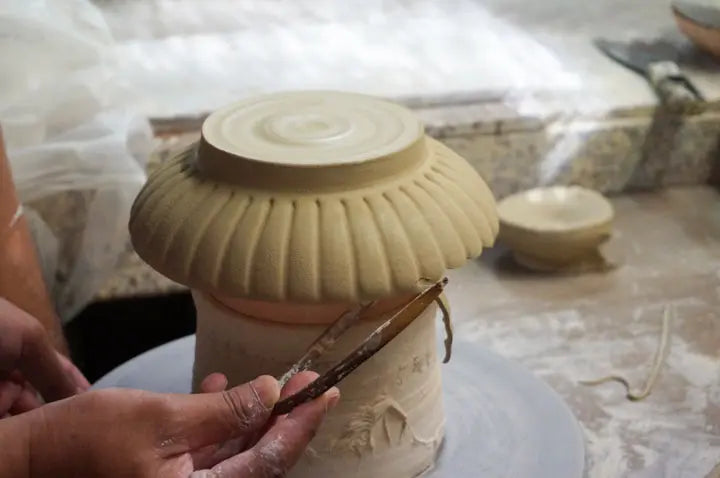The charm of Ko-Kutani lies in its strength and unbridled nature. It is a pottery that contains a dynamism that shocks the viewer's soul, even if it is a bit rough and opulent, as if it expresses the temperament of the feudal lords who inherited the aesthetic sense of the Sengoku and Azuchi-Momoyama periods.
Iroe porcelain was scarce at the time and its production methods were unknown. Under these circumstances, Ko-Kutani incorporated the most advanced techniques of Ming Dynasty China, yet its expression was not an imitation of Chinese techniques. Ko-Kutani is an entirely original expression.
It is amazing that such a brilliant and original art form was created in the mountains of Kaga, far from the island of Dejima in Kyushu, during the period of national isolation in the early Edo period. It was the support of the Maeda family that made such a feat possible. In the early Edo period, when Ko-Kutani was produced, the Tokugawa era had just begun. The Maeda family was still powerful, and the Maeda family spirit of "conquering the world with culture even in the Tokugawa era" can be felt in Ko-Kutani. The power and boldness of Ko-kutani still retains the dignity of the Warring States period.

